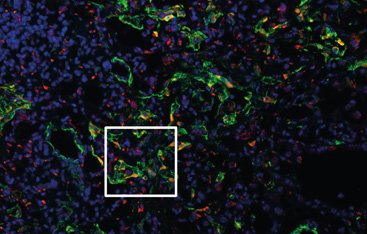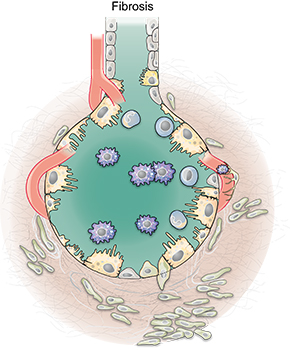Clinical trials: How patients and research work together to help slow steady deterioration of diseases
Interstitial lung diseases (ILD) are rather rare - but many of them are incurable. As for example idiopathic pulmonary fibrosis (IPF): in IPF, lung tissue is scarring increasingly, causing the lungs to become stiff, lung function declines and gas exchange deteriorates. In some patients this happens quickly, in others more slowly. It is difficult to predict how the disease will develop. On average, patients die three to four years after first diagnosis. Currently, there are only two approved drugs available, pirfenidone (trade name Esbriet) and nintedanib (trade name Ovef), both of which target the process of fibrosis. One final optional possibility of treatment is lung transplantation – for patients who are eligible for this procedure.
In several clinical trials, researchers at the German Center for Lung Research are trying to develop new strategies to improve the treatment of IPF patients: Which therapies, which medication can at least decelerate the progression of the disease?
Observational study - longer survival with antifibrotic therapy
Researchers led by Prof. Jürgen Behr (LMU clinic) and study coordinator Dr. Marion Frankenberger (CPC-M) are investigating, for example, the course of the disease in patients with idiopathic pulmonary fibrosis.
They want to know: Does antifibrotic therapy significantly prolong the lives of patients? Since there is little observational data on this issue, they searched the INSIGHTS-IPF registry database. They analyzed data from a cohort study of IPF patients from 20 expert centers for interstitial lung disease in Germany.
Initial results show that 1-year and 2-year survival rates were significantly higher in patients on antifibrotic therapy - with a 37% lower risk of death, leading to the conclusion that the medication works.

Antifibrotic therapies for other interstitial lung diseases.
In another study (RELIEF), the team investigated interstitial lung diseases not belonging to the group of idiopathic pulmonary fibrosis.
These include connective tissue disease- or asbestos-associated ILDs, exogenous allergic alveolitis, lung involvement in the setting of rheumatoid arthritis, and chronic hypersensitivity pneumonitis. To date, there are few treatment options for patients with these diseases. However, for related diseases from the group of idiopathic pulmonary fibrosis (see above), effective antifibrotic drugs are available that prevent disease progression. Consequentially, this efficacy was investigated for the non-IPF ILDs as well.
The result of the phase 2b study: The patients respond similarly well to the antifibrotic effect. The researchers therefore suggest this antifibrotic therapy to represent a new standard of care in the treatment of progressive fibrotic ILD.



